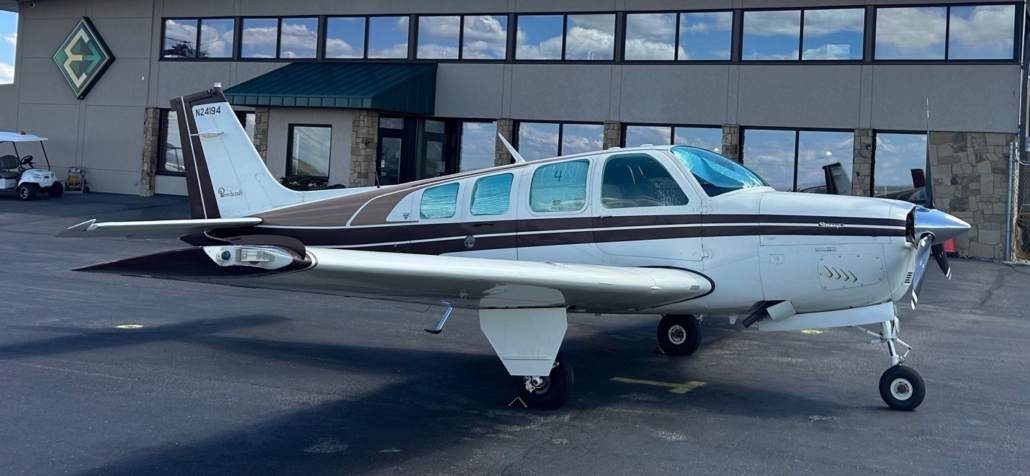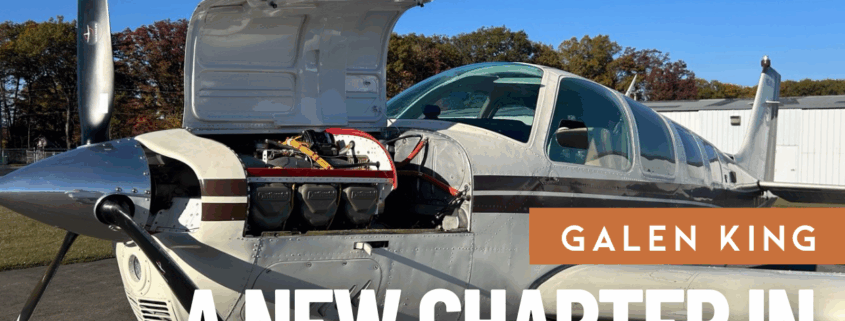|
Getting your Trinity Audio player ready...
|
May 2022
I returned the fuel hose to the pump, disconnected the ground wire from the airplane’s muffler tailpipe, and spun the cable reel to wind it up. Looking to the west-southwest, I yelled to Jason, “Come on—this storm is approaching quicker than we anticipated!”
With great excitement, I climbed onto the wing, slid across the seat, waited for my friend to get in, and carefully closed the door, checking that it latched properly by pushing at the top as instructed by the seller the day prior. So much had happened in the last few weeks to reach this moment. We started the engine immediately.
Climbing out over Wellington, Kansas, we turned east toward Pennsylvania, the thunderstorm’s outflow giving us a fantastic tailwind.
More than a year earlier, I had sat down with my flight school’s owner and made a verbal agreement for the transfer of my trusty Piper Warrior. The 1981 model had only around 4,000 total hours, had been privately owned for more than 40 years, and was now a perfect candidate for training aspiring pilots.
There was one caveat: a wing spar bolt airworthiness directive was in effect for the model. Even though my airframe was exempted due to its low hours, the buyer wanted the inspection done. I agreed—safety first, always—and the eddy current inspection passed with flying colors.
Now, for the fourth time in 30-plus years, a new ownership experience was about to begin. Paying for an empty hangar never excited me, and the best way I know to fix that is to fill it with an airplane.

My Warrior only had around 4,000 total hours, had been privately owned for more than 40 years, and was now a perfect candidate for training aspiring pilots.
I remembered twenty years earlier, searching diligently for my second airplane. With a limited budget, I found it helpful to “plan loosely”—considering acquisition, mission, and exit strategy. That approach brought me to the sweet little Piper Warrior, though the search nearly became an obsession.
This time, I wanted more: around 150 knots, a functioning autopilot, and a capable IFR platform. I began reading about the Mooney series—efficient machines by design. My A&P friend Jason and I looked at several Mooneys, and one day as I sat in an M20J, I realized the cabin was just too small. I’m not a big person, but I do want comfort on trips and room to stretch a bit.
Having owned a Piper Arrow before, I knew I wanted more speed—and the ability to travel with baggage.
History repeated itself: another obsession. I was done with Piper. Cessnas are fine but don’t excite me. The Mooney cabin was too tight. So now, the dream turned to a Beechcraft Bonanza—specifically the F33A.
I liked the A36 too, but I wanted to hold down costs. I did my research on model years, features, pros and cons. One day, I drove 2½ hours to look at a 1987 F33A described as an original-owner, corrosion-free cream puff. Excitement surged as the hangar door opened—but my optimism faded when I spotted visible corrosion on the left elevator. I inspected the rest of the airplane, thinking perhaps a discount could make it worthwhile, but another buyer made a quick deal.
The hunt continued.
I considered hiring a buyer’s broker but decided against it. My iPhone’s “frequently visited” list now consisted entirely of aircraft-for-sale sites. No disrespect to the V-tail Bonanza, but I have a traditional streak when it comes to what an airplane should look like. I began including the A36 in my search, broadening the field.
Then it happened: a 1978 A36 listed on Barnstormers.com caught my eye. Though it had multiple owners over the years, the logbooks were complete, time was low, and both paint and interior were original—just as it rolled off the factory floor in 1978.
I liked the idea of taking this vintage airplane and modernizing it slowly.
But the price! Pandemic pandemonium had sent airplane prices—like everything else—into the flight levels. Fortunately, I had sold my Warrior at a premium, so I was ready to pay up for the replacement.
After a long conversation with the seller, I felt a strong rapport. He kindly offered to pick up my friend Jason and me from the airport in Kansas. Within 48 hours, we were on our way.
In the unseasonable late-morning heat, I held back my excitement as the hangar door opened. The next several hours were filled with careful inspection and logbook review, punctuated by good conversation and shared flying stories.
The seller, 80 years old, had been deemed uninsurable on the A36 despite a spotless record and decades of experience—including flying fuel transports for the Air Guard. He still maintained and flew an aerobatic sport kitplane. To my delight, he was also a retired engineer from Beechcraft, with first-hand stories about the factory and the Beech family’s commitment to building quality airplanes. I was enthralled.
As the day wound down, the seller and I worked respectfully toward an acceptable purchase price. We made a verbal agreement contingent on clear title work. In the first available VFR weather window, I’d return with funds to complete the deal.
Pressed for time, we closed up the hangar and headed back to our United flight to Philadelphia.

The logbooks were complete, time was low, and both paint and interior were original—just as it rolled off the factory floor in 1978.
It took nearly a month for that perfect VFR window. My insurance company also required dual instruction in the make and model before I could fly it home. The airport manager connected me with an excellent instructor, who sent me a detailed multi-page familiarization packet on the A36. After our training flight, I was ready.
The trip home required one fuel stop about halfway. After just under seven hours of flying, we touched down at my home airport in eastern Pennsylvania—and filled that hangar at last.
Since then, I’ve made significant upgrades and flown many satisfying hours in this airplane. It has proven to be everything I hoped for—and more.
- A New Chapter in Airplane Ownership - October 22, 2025
- If you want to be a pilot, you better believe! - April 23, 2018
- Don’t EVER do that again - January 4, 2018





Leave a Reply
Want to join the discussion?Feel free to contribute!